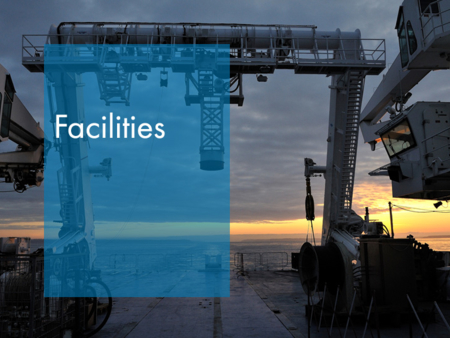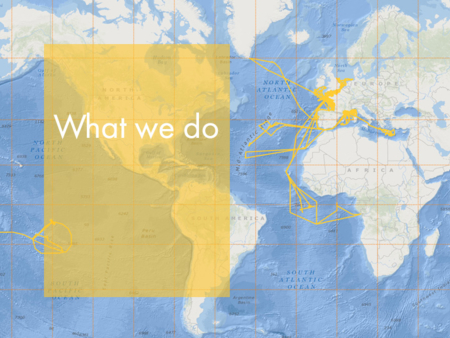Interferometric side-scan sonar of the Haliotis
A side-scan sonar builds detailed acoustic images of the seafloor.
The interferometric side-scan sonar comprises a bathymetric function. To make a side-scan sonar interferometric, the height of an echo on the bottom has to be linked to the angle of arrival by accurately measuring the phase difference of the arrival times on the various arrays stacked on either side. By using the true bearing and the slant range (obtained by other means), the position of the sounding points can be established in three dimensions.
The main advantage of an interferometric side-scan sonar over a multibeam sounder is its greater swath width in shallow water. Bathymetric measurements are, however, less accurate than those produced by a multibeam echo sounder and suffer from excessive noise at the end of the range.
The launch Haliotis is equipped with a Geoswath interferometric sonar fixed rigidly to the hull. The device functions at a frequency of 250 kHz and provides the following measurements:
- bathymetry (depth)
- imaging (amplitude of backscatter signal) in shallow waters (max depth 100 m).
Characteristics of the Haliotis echo sounder
Sounder | Geoswath |
Measurements | Bathymetry/imaging |
Frequency | 250 kHz |
Max depth | 0.5 to 100 m |
Swath width | Bathymetry: 5P (300 m max) Imaging: 10P (300 m max) |
Sampling cross section | 1.5 cm (50 kHz) |
Transmitting beam width | 0.9° (transmitting x receiving) |
Bathymetric accuracy
| 5 cm @ D = 2m 10 cm @ D = 20 m |




